How to Feed Your Dog a Raw Food Diet

Did you catch our previous post on 8 reasons why keto may be right for your pup?! If so, you may be wanting to take it a step further and feed your dog a raw food diet.
Dog food as we know it has come a long way since humans first started keeping dogs as pets. Unfortunately, it’s evolving in the wrong direction! 😩 Much like modern-day human food, commercially-processed dog food would be unrecognizable to your pup’s ancestors. It’s not what their bodies were made to digest, and it can prevent them from enjoying optimal health.
If you’ve been eating keto for a while, you know how much better life is when you’re fueling your body with the proper nutritional profile and eating the foods that your body was meant to process efficiently. Why not do the same for your furry friend?
Today we’re talking about how to feed your dog a raw food diet, including some of the ways your pup can enjoy the benefits of this diet without breaking the bank.
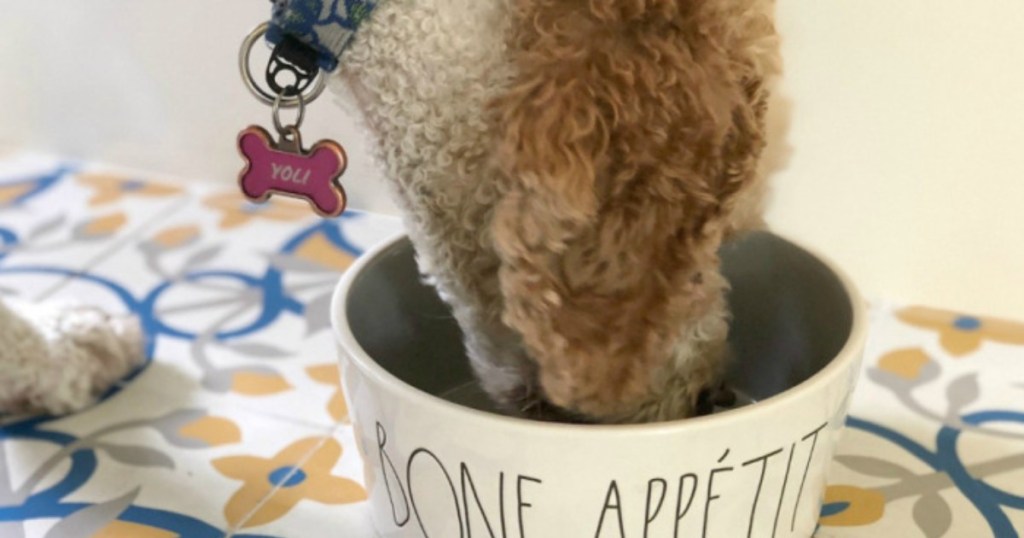
Why choose raw foods for your dog?
The raw food diet for dogs was adapted from the Ancestral Diet, which is based on the belief that dogs are healthiest when they eat the food nature intended for their species. The goal of the Ancestral Diet is to offer the same nutritional profile that dogs would have received from eating their prey thousands of years before the invention of kibble.
Your pup’s ancestors were primarily carnivorous, and eating was very competitive because they hunted in packs. Their nutritional intake consisted of about 55% protein, 30% fat, and 15% carbohydrates. Although dogs are evolving to process carbohydrates better because of their proximity to humans, they are still inefficient when it comes to this process. This is a familiar concept to anyone eating keto!

Wild dogs were equipped with digestive systems that helped their bodies to process raw meat, and they never ate wheat. These same digestive mechanisms that helped dogs to digest raw meat make it much harder for today’s domesticated dogs to thrive on a diet of complex carbohydrates.
While a dog would die without protein or fat, it has no need for starches or carbohydrates. Head on over here to check out all the benefits of eliminating carbs from your dog’s diet.
While raw meat sounds rather unappetizing to us humans, it’s important for dogs to eat their meat raw in order to preserve the meat’s built-in enzymes needed to digest it.
If you serve a dog food without these enzymes, their pancreas will have to work overtime to produce enzymes on its own. This pancreatic wear and tear has been linked to both acute and chronic diseases in dogs eating diets comprised mainly of processed food.
While there aren’t as many medical studies as we would like to illustrate the benefits of feeding raw, the anecdotal evidence is strong. Pet owners report numerous improvements to skin and coat health, immunity, general energy levels, athletic ability, fertility, and alleviation of various health conditions for dogs on a raw food diet.
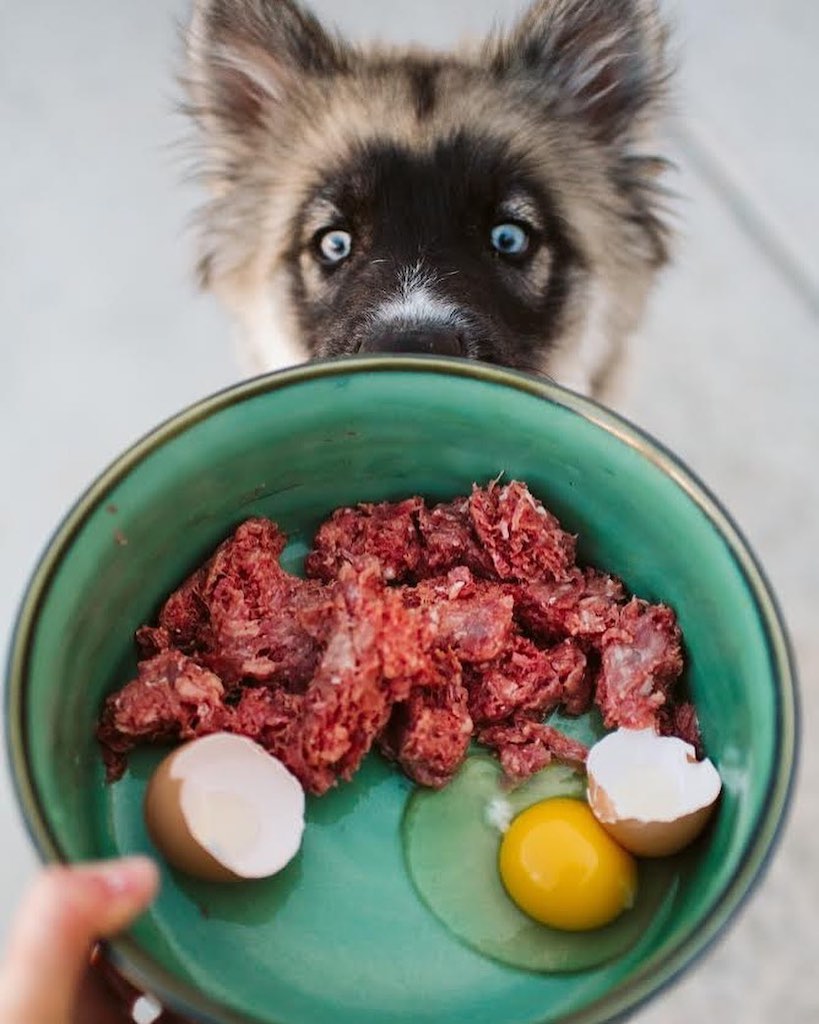
What would a raw food diet look like for my dog?
The amount of raw food needed per dog is determined by weight. For instance, a 50-pound dog will eat about a pound of meat per day. Meat isn’t the only source of nutrition animal products provide for your dog, though. Here’s the breakdown of raw foods your dog needs for optimal health:
- Lean meat. Ideally, about 75-80% of your dog’s diet should be raw, lean, muscle meats. Good choices include beef, bison, turkey, lamb, pork, and chicken. Your dog does need a little bit of fat too, but be careful not to feed them too much of it. This is one of the most common mistakes of dog owners who are starting out with a raw food diet.
- Bones. About 10-15% of your dog’s raw diet should be bones. They’re an excellent source of minerals like calcium, phosphorus, and vitamins A, B12, and E. Your dog wouldn’t survive without these essential elements and they won’t get all of them from meat alone, so don’t skip the bones. Offer your dog chicken wings, necks, legs or thighs, turkey necks, beef tail bones (for larger dogs), lamb or goat necks, and ribs. You can also feed your dog whole animals such as fish, rabbits, and poultry. Feeding your dog farm-fresh eggs in the shell is another option, as they offer a good balance of calcium and phosphorus.
- Organs. The remainder of your dog’s raw diet (about 10%) should be organs, which are rich in vitamins and minerals like choline. Nutrient-rich organs include the liver, kidney, spleen, pancreas, thymus, brain, lung, and testicles.
- Fruits and vegetables (optional). If you feed your dog the proper amounts of meat, bones, and organs listed above, you’ll be providing a balanced raw diet with enough vitamins and minerals for good health. Fruits and vegetables do offer some unique benefits that your dog can’t get from animal products, though. Your dog’s ancestors ate grasses and berries in search of prebiotics, chlorophyll, carotenoids, lycopene, lutein, and flavonoids. When serving your pup fruits and vegetables, be sure to avoid the starchy ones like peas and potatoes.
For more practical tips on how to feed your dog a raw food diet, check out this helpful infographic and see an example of a real-life weekly raw meal plan over at Dogs Naturally Magazine.
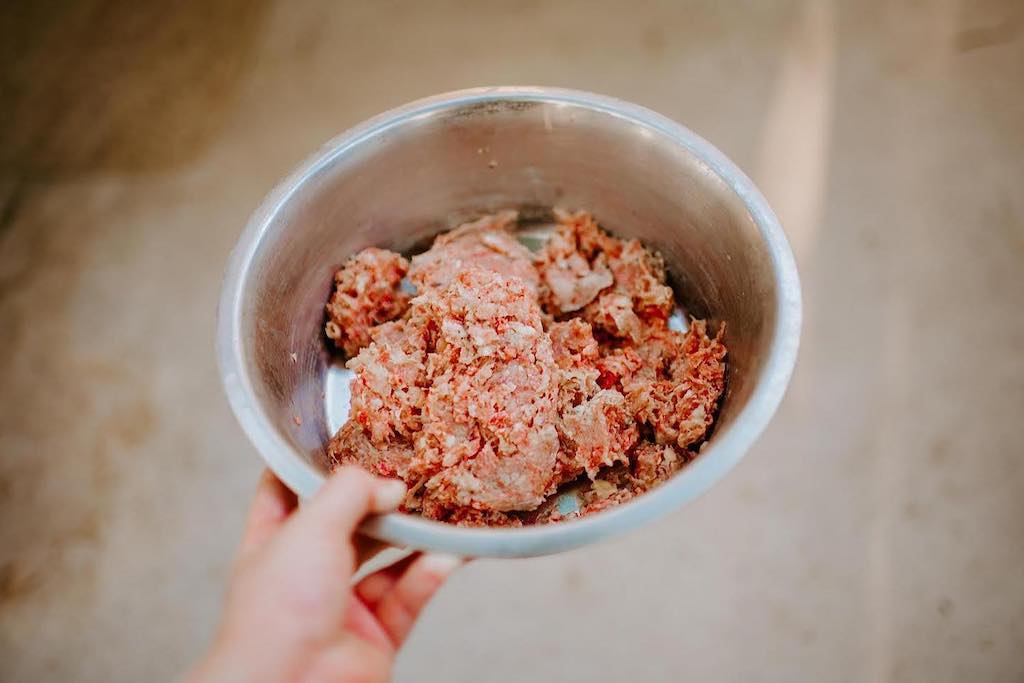
How to feed your dog a raw food diet without breaking the bank.
If money is no object, there are some amazing commercial kibbles online and in pet stores with gorgeous ingredient lists. But there are a couple of ways you can bring down the costs!
- Buy local. Being nationally available adds some serious hidden costs for raw dog food companies. Thankfully, there are regional brands that usually work exclusively with local, independent pet stores. You might not ever see these less expensive brands on the shelves of a chain store, so give your local pet store a call to find out which local brands they recommend. Feed stores and farms often sell locally-made raw dog food too.
- Find a meat-only brand. It’s becoming increasingly common, especially for local raw brands, to offer just the meat and organs portion of a raw food diet. Coordinating the meat is usually the most expensive part of going raw, but once that’s done, it’s pretty easy to supplement each meal with some mashed sweet potatoes or a bone. You might even try goat’s milk or food toppers.
- Talk to your butcher. Some butchers make raw dog food! They can use cuts of meat that their human clientele aren’t usually interested in, which means a lower price for you. Even if they don’t regularly sell dog food, many butchers will save those cheaper cuts for you if they know you’re interested. Butchers can also be a great source for uncooked bones.
- Buy in bulk and make it yourself. As with anything, buying in bulk can save you a lot of money. Take a trip to your local big-box store and use your meat grinder to prepare a month’s worth of pet food for your freezer. If you don’t require enough food to make buying in bulk worth it, ask like-minded dog owners if they’d be interested in going in on a bulk purchase with you.
- Supplement your dog’s kibble. This is a great way to transition your pup to a raw food diet without the full financial commitment or pressure of raw foods being your dog’s only source of nutrition straight right away. Mix in raw meat when you can, crack a raw egg on top of your dog’s food, or look for commercial options that offer some of the benefits of going raw without the full associated cost. Ask your vet about raw meal toppers or kibble that includes freeze-dried raw pieces.
- Share your leftovers. If you’re currently eating keto, a lot of what you eat is likely good for your dog too! Leftover ground beef from Taco Tuesday is a great source of protein. The skin from your salmon is a good source of fat. The fat cut from your steak along with some leftover green beans can supplement your dog’s diet with real nutrition.

Overall, feeding your dog a diet of raw foods is quite intuitive and pretty easy once you get started. It’s something you can ease into, and expand upon as you and your furry friend both become comfortable with this new way of eating. Over time, both you and your pup should notice a difference and feel good about these dietary changes!
Post contributed by Maddy Miller
Maddy Miller, MFA is a pet-centric writer living in Salt Lake City, Utah with her Belgian Malinois, Freyja. Her areas of expertise include sustainable nutrition, behavioral training through positive reinforcement, and the benefits of CBD oil.


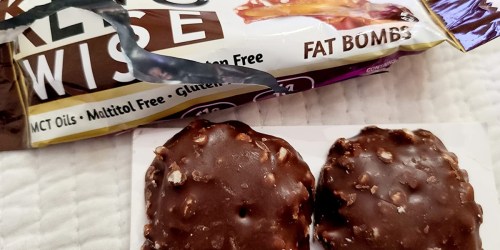

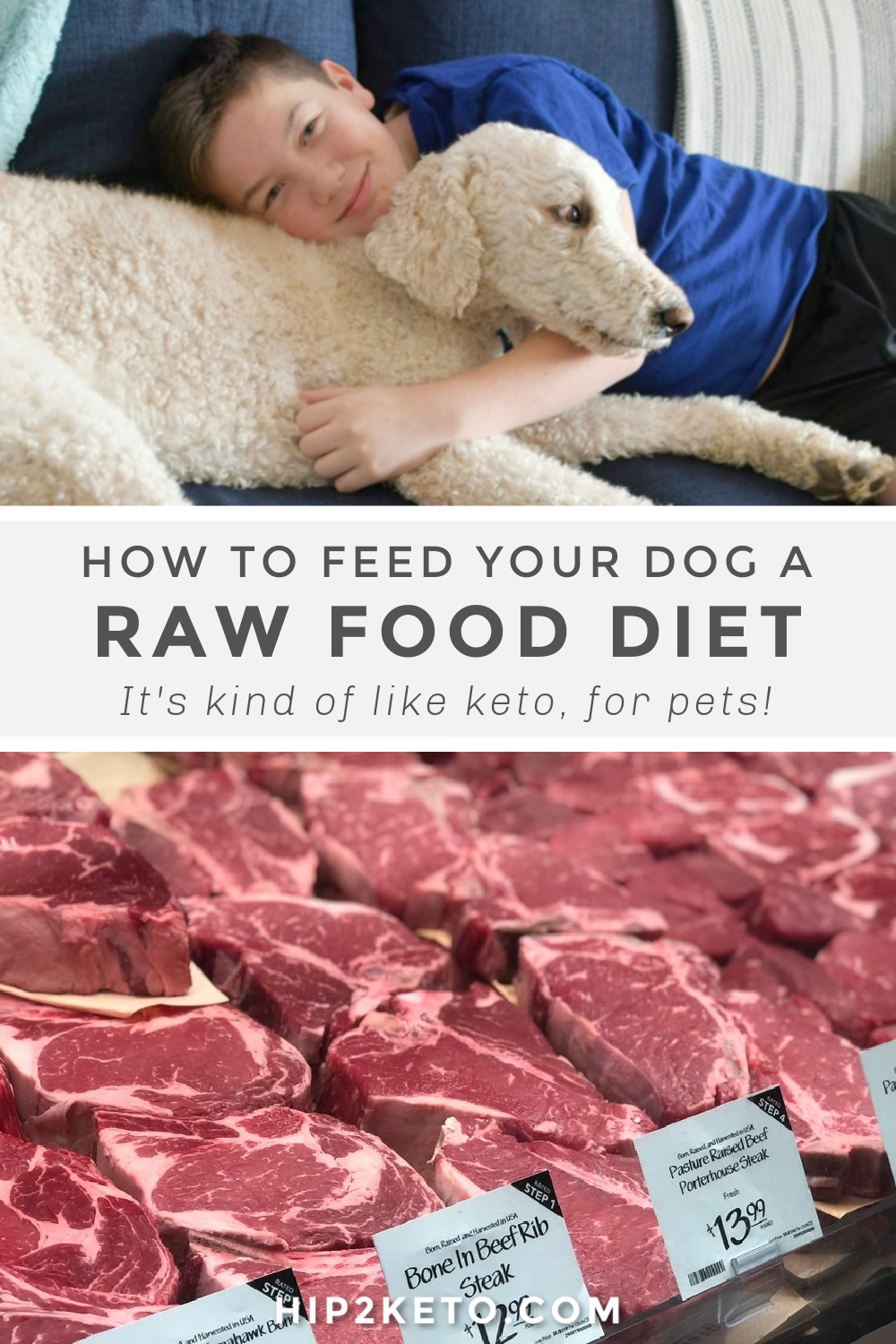
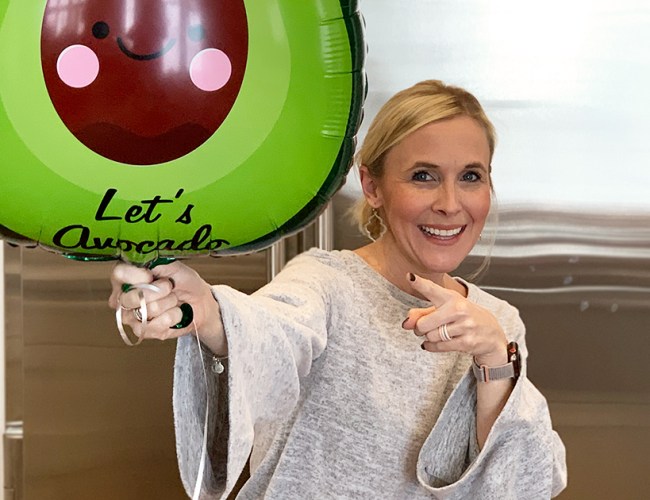
Comments 0